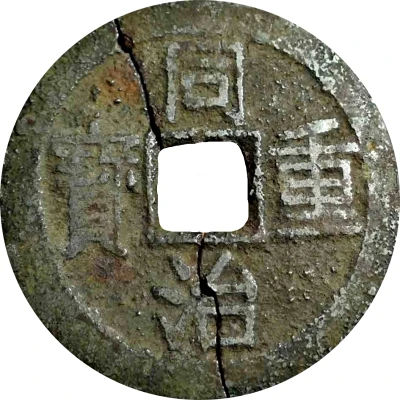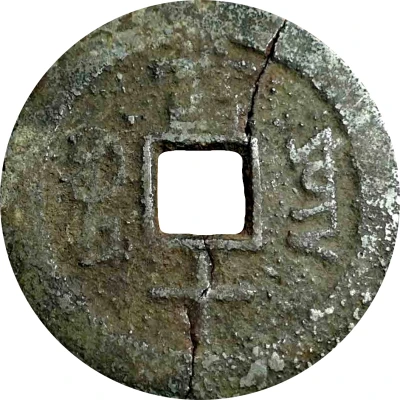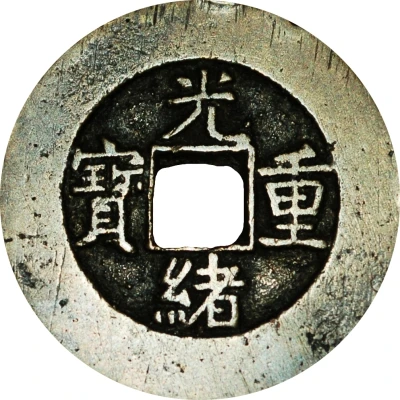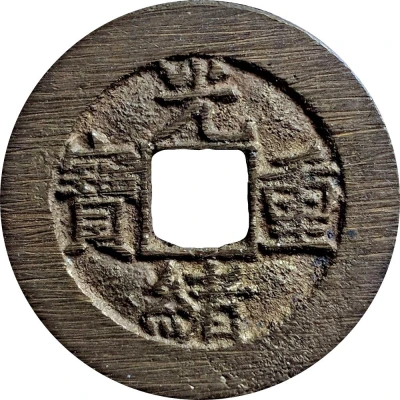
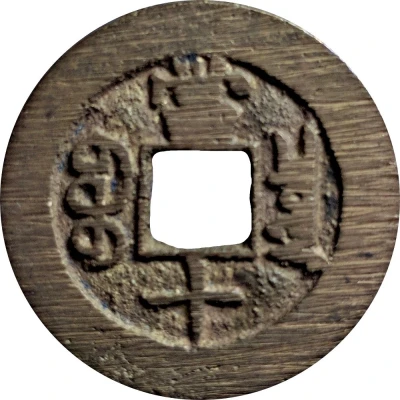

© gros
10 Cash - Guangxu Zhongbao; Boo-chiowan; type A ND
| Brass | 10.50 g | 30 mm |
| Issuer | Empire of China |
|---|---|
| Emperor | Qing dynasty › Guangxu (光緒帝) (1875-1908) |
| Type | Standard circulation coin |
| Years | 1875-1880 |
| Value | 10 Cash |
| Currency | Cash (621-1912) |
| Composition | Brass |
| Weight | 10.50 g |
| Diameter | 30 mm |
| Thickness | 2.1 mm |
| Shape | Round with a square hole |
| Technique | Cast |
| Orientation | Medal alignment ↑↑ |
| Demonetized | Yes |
| Updated | 2024-10-04 |
| Numista | N#31856 |
|---|---|
| Rarity index | 80% |
Reverse
Two Manchu words (read vertically) separated by the hole, all with one Chinese ideogram above and one below.
Scripts: Chinese (traditional, regular script), Mongolian / Manchu
Lettering:
當
ᠪᠣᠣ ᠴᡳᠣᠸᠠᠨ
十
Translation:
Dang Shi / Boo-chiowan
Value 10 / Boo-chiowan
Edge
Plain
Comment
Two major types exist:- Type 1: Top three strokes of Guang point up (like \ | /)
- Type 2: Top three strokes of Guang point down (like / | \)
DocBaoFouEr
DocBeiStrokes
DocBooProt
Interesting fact
One interesting fact about the Standard circulation coin 10 Cash - Guangxu (Zhongbao; Boo-chiowan; type A) ND (1875-1880) from Empire of China made of Brass weighing 10.50 g is that it was designed by a French engraver named Charles Fournier. Fournier was a renowned numismatist and engraver who was commissioned by the Chinese government to design a new currency for the country. He created a series of coins that were minted between 1875 and 1880, including the 10 Cash coin, which features a portrait of the Guangxu Emperor on one side and a dragon on the other. The coin was made of brass and had a unique square hole in the center, which was a distinct feature of Chinese coins at the time. The coin was used widely in China during the late Qing dynasty and is now considered a rare and valuable collector's item.
